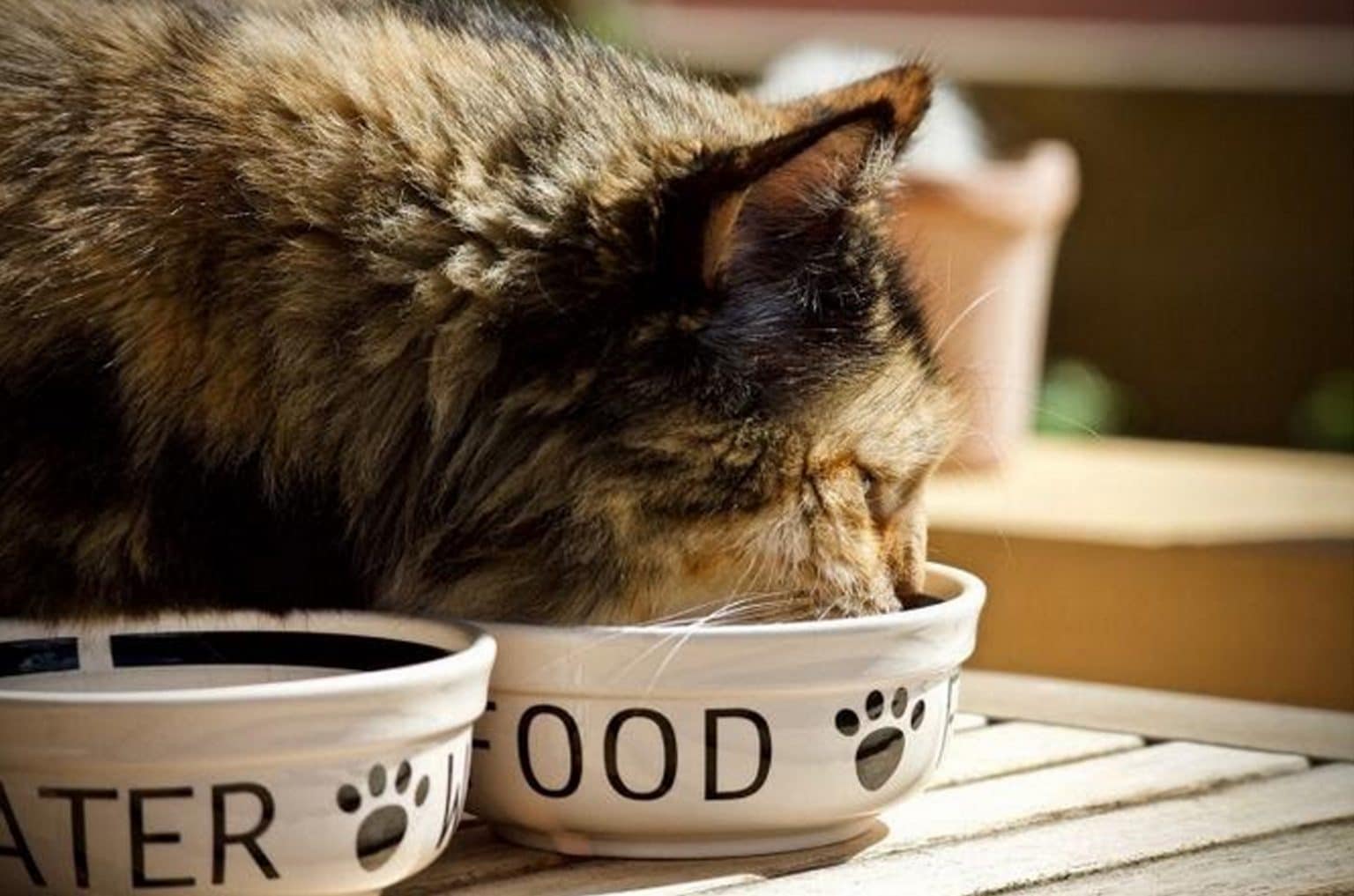Frequently Asked Questions
How much wet food should a cat eat per day?
The amount of wet food a cat should eat per day varies based on factors like age, weight, and activity level. Generally, a typical guideline is about 1/4 to 1/2 can per 5 pounds of body weight, but consult your veterinarian for personalised recommendations.
How much dry food is suitable for a cat per day?
The suitable amount of dry food for a cat per day varies based on factors like age, weight, and activity level. Generally, a typical adult cat may require about 1/4 to 1 cup of dry food daily, but it's best to consult your veterinarian for personalized advice.
How many meals should a kitten eat in a day?
Kittens should ideally eat four meals a day. This frequent feeding helps support their rapid growth and high energy levels, ensuring they receive the necessary nutrients for healthy development.
What is the recommended daily calorie intake for cats?
The recommended daily calorie intake for cats varies based on factors like age, weight, and activity level, but generally ranges from 20 to 30 calories per pound of body weight. Always consult your veterinarian for tailored advice.
How much food should I feed my adult cat daily?
The daily food requirement for an adult cat varies based on factors like weight, age, and activity level. Generally, you should feed your cat about 20 calories per pound of body weight, adjusting as necessary and consulting with your veterinarian for personalized advice.
What is the ideal food portion for a senior cat?
The ideal food portion for a senior cat depends on their weight, activity level, and specific dietary needs. Generally, a senior cat may require 20% fewer calories than younger cats, so consult your veterinarian for personalized feeding recommendations.
How much food should a healthy adult cat eat daily?
A healthy adult cat should eat approximately 20 calories per pound of body weight daily. Factors like age, activity level, and specific dietary needs may influence this amount, so always consult your veterinarian for personalised guidance.
What factors influence a cats daily food intake?
The factors that influence a cat's daily food intake include their age, weight, activity level, and overall health. Additionally, the type of food and feeding guidelines provided on the packaging play a crucial role in determining the appropriate amount.
How can I determine my cats ideal portion size?
Determining your cat's ideal portion size involves considering factors such as their age, weight, activity level, and the specific feeding guidelines on the food packaging. Consulting with your veterinarian can provide tailored recommendations for your cat's needs.
What is the best feeding schedule for kittens?
The best feeding schedule for kittens involves offering them small meals four times a day. As they grow, you can gradually reduce this to three meals daily by six months of age. Always ensure fresh water is available.
How does a cats age affect its diet?
A cat's age significantly influences its diet. Kittens require nutrient-dense food for growth, while adult cats need a balanced diet to maintain health, and senior cats may benefit from specialized formulas to support aging-related issues.
What are the signs of overfeeding a cat?
The signs of overfeeding a cat include noticeable weight gain, lethargy, vomiting, and changes in appetite. Additionally, a cat may exhibit difficulty grooming itself or show signs of discomfort when moving.
How often should I feed my senior cat?
The feeding frequency for senior cats is important. It is generally recommended to feed senior cats two to three small meals a day to maintain their energy levels and support their health.
What is the impact of activity level on feeding?
The impact of activity level on feeding is significant. Active cats require more calories to maintain their energy levels, while less active cats need fewer calories to prevent weight gain. Adjusting food portions based on activity helps ensure optimal health.
How can I transition my cat to a new diet?
Transitioning your cat to a new diet involves gradually mixing the new food with the old food over 7 to 10 days. Start with 25% new food and 75% old, slowly increasing the new food ratio to prevent digestive upset.
What is the best type of food for kittens?
The best type of food for kittens is a high-quality, nutrient-dense formula specifically designed for their growth and development. Look for options rich in protein, taurine, and essential fatty acids to support their health.
How much should I feed my cat during winter?
The amount you should feed your cat during winter may increase slightly due to their need for extra energy to maintain body heat. Monitor their weight and consult your veterinarian for tailored advice based on their specific needs.
What are the consequences of underfeeding a cat?
The consequences of underfeeding a cat can be serious. It can lead to malnutrition, weakened immune function, weight loss, and lethargy, ultimately affecting their overall health and wellbeing.
How can I measure my cats food accurately?
Measuring your cat's food accurately involves using a standard measuring cup or a kitchen scale. Ensure you follow the serving size recommendations on the packaging and adjust based on your cat's weight and activity level for optimal nutrition.
What is the ideal feeding frequency for adult cats?
The ideal feeding frequency for adult cats is typically twice a day. This schedule helps maintain their energy levels and supports healthy digestion, ensuring they receive the necessary nutrients throughout the day.
How does wet food benefit my cats health?
The benefits of wet food for your cat's health include increased hydration, improved digestion, and enhanced nutrient absorption. Its higher moisture content helps prevent urinary tract issues, while its palatability encourages a healthy appetite, especially in picky eaters.
What should I consider when feeding a pregnant cat?
When feeding a pregnant cat, consider her increased nutritional needs, including higher protein and calorie intake, and ensure she has access to fresh water. Consult your veterinarian for specific dietary recommendations tailored to her health and stage of pregnancy.
How can I adjust my cats diet for weight loss?
Adjusting your cat's diet for weight loss involves reducing portion sizes, choosing lower-calorie food options, and ensuring regular feeding schedules. Consult your veterinarian for a tailored plan that considers your cat's specific needs and activity level.
What is the recommended portion for overweight cats?
The recommended portion for overweight cats is typically less than the standard feeding guidelines, often around 10-20% less, depending on their specific weight loss goals. It's essential to consult your veterinarian for personalized feeding advice.
How much food should I give my cat after surgery?
The amount of food to give your cat after surgery depends on their size and the type of procedure performed. Start with small portions of their usual diet and gradually increase as they recover, ensuring they stay hydrated. Always consult your veterinarian for specific recommendations.
What are the best practices for feeding multiple cats?
The best practices for feeding multiple cats include providing separate feeding stations to prevent competition, monitoring portion sizes based on each cat's needs, and establishing a consistent feeding schedule to promote routine and reduce stress.
How can I tell if my cat is hungry?
The signs that indicate your cat is hungry include vocalisations, pacing near their food bowl, or showing interest in your food. Observing these behaviours can help you determine their feeding needs.
What is the role of treats in a cats diet?
The role of treats in a cat's diet is to provide enjoyment, strengthen the bond between pet and owner, and can serve as a training aid. However, they should be given in moderation to avoid disrupting a balanced diet.
How can I ensure my cat stays hydrated?
Ensuring your cat stays hydrated involves providing fresh, clean water daily and considering wet food options, which contain higher moisture content. Regularly check and refill their water bowl to encourage drinking.
What is the best way to store cat food?
The best way to store cat food is in a cool, dry place, ideally in an airtight container to maintain freshness and prevent moisture or pests. Always check the packaging for specific storage recommendations.

